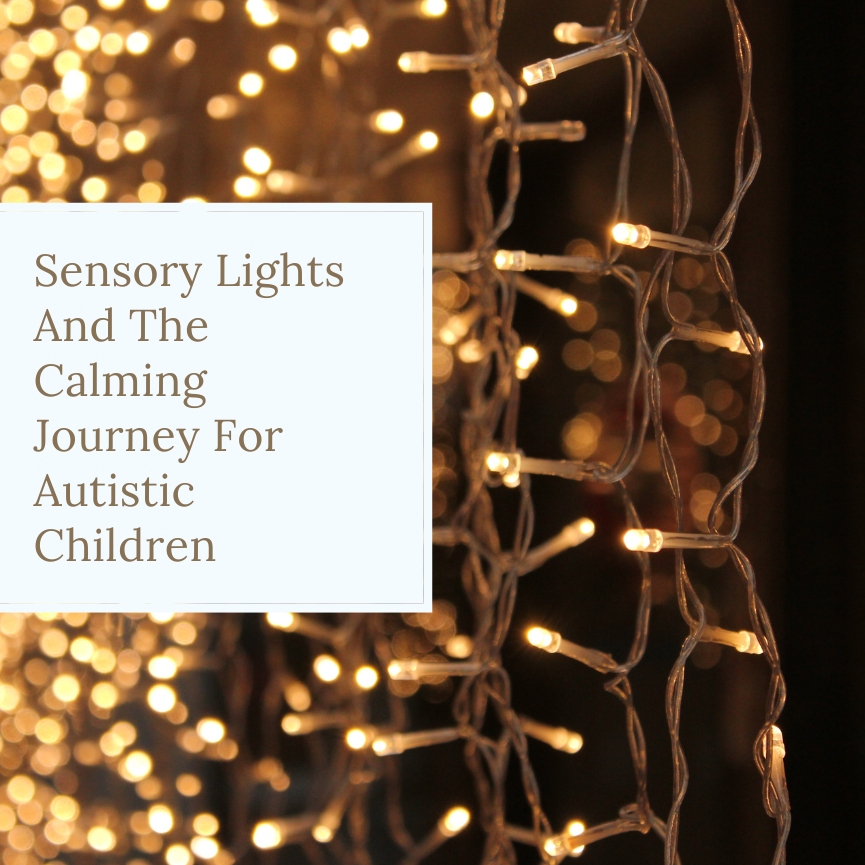
- May 10, 2024
- 16 Views
- 0 Comments
Sensory Lights And The Calming Journey For Autistic Children
You may have noticed your child grow restless under certain kinds of light. Light sensitivity is a sensory processing issue that is common in children with ADHD and Autism. But there is a solution, just like there is for any issue. There are a lot of preventive measures and other steps we can take to keep our kids peaceful and at ease. Continue reading to learn more.
Very likely, you were more focused on aesthetics than the actual lighting's visual impact when you were shopping for your living room lamp or kitchen table light fixture.
Unless you or someone you know suffers from visual sensitivity, migraines, or a disease related to vision, most individuals won't give the visual effects of the light a second thought.
Light sensitivity is a typical symptom that a child with sensory processing disorder may encounter.
Children and teenagers with autism or Asperger’s syndrome can relax and settle down with the aid of calm, rhythmic lighting.
Lighting and Autism
Many beneficial relationships between color and mood have come to light as a result of research on lighting and autism.
A pleasant, creative environment can be enhanced by the use of certain hues, such as blue, and mood lighting.
Brain damage can affect how visual data, light, and patterns are processed since the brain must analyze false information.
Symptoms of light sensitivity can include:
- Dizziness
- Nausea
- Anxiety
- Irritability
- Sleepiness
- Eyestrain
- Fatigue
- Discomfort
Sensory lights
Different degrees of visual stimulation, such as those provided by natural lighting, fluorescent lighting, lamp/desk illumination, and secondary glare, can have a significant impact on a person's perceptions and mood.
Rhythmic motion lamps are simple to use in your home, classroom, or other peaceful setting. These lighting alternatives all function well in lecture halls, meditation spaces, living rooms, and hospitals and don't require installation.
Here are a few things you can do to make sure your autistic child has the right kind of sensory lighting, both inside and outside.
- Whenever possible, utilize tabletop or desk lights with full-spectrum light bulbs instead of overhead illumination.
- Keep computer screens away from windows where glare can become a problem
- If your flooring is tile or a reflective hard surface, consider an area rug to reduce the effects of light reflection and glare
- Explore inverting the colors on your computer display or adjusting for brightness
- Color filters can be used over electronic screens and on paper to filter light.
- The effects of fluorescent light bulbs are muted by fluorescent light filters for classrooms, which hang beneath fluorescent light covers like drapes or blinds.
In the end, the adjustments you choose to make to your lighting will depend on your personal preferences.
Types of sensory lighting
Sensory lights such as Tornadoes, bubble fish, color-changing LED lights, and lava lamps in the form of rockets are a few examples of creative sensory illumination.
Within the context of the home, lighting can be transformed from a strictly functional item into something enjoyable, imaginative, and fascinating.
The vibrant bubble tubes elicit a peaceful sensory experience and serve as a stimulating focal point to capture a child's interest.
Children with sensory processing disorders frequently benefit from the usage of bubble tube lamps because they can track the bubbles, which helps with the development of their eyesight. They can also respond positively to color and movement.
constructing a sensory room for a child with autism
A person's sensory system can be stimulated, developed, and balanced with the use of a sensory room.
To help a youngster learn about cause and effect, sensory rooms can have relaxing music, vibrating cushions, fiber optics, mirror balls, bubble tubes, water beds, tactile walls, disco lights, projectors, and other equipment that is activated by switches, movement, sound, or pressure.
If there's a chance you can change something with small lighting adjustments, do it! Lighting affects learning, emotion, and perception.


Comments - 0 comments till now